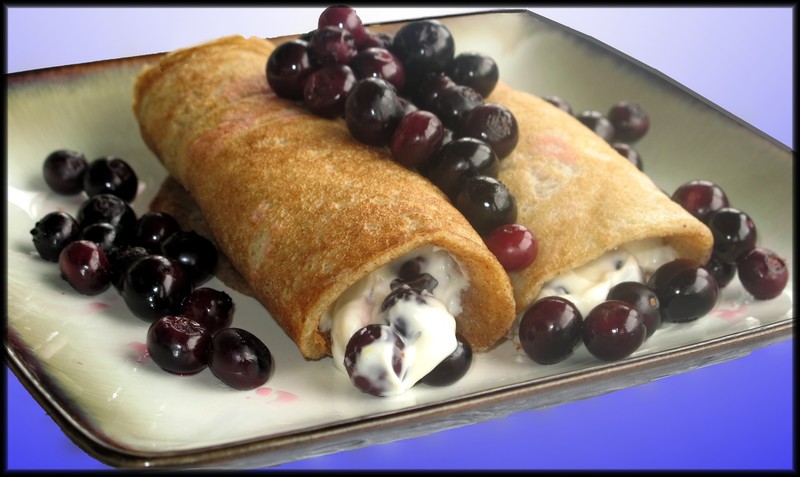We’ve been fans of Old World Breads since they first appeared at the Historic Lewes Farmers Market. Unfortunately, we arrived too late last Saturday morning and found both the raisin bread and sourdough loaves had sold out. I then had one of those proverbial aha moments: we’d bought an Alaskan cookbook that included a packet of sourdough starter and a recipe for raisin bread. I might be able to make a loaf or two myself.
Before we start baking, you might be interested in some background on sourdough, the oldest form of leavened bread. Ancient Egyptians were using sourdough cultures for bread baking more than 4,000 years ago (skillful in the practice of fermentation, they were also master brewers). A combination of flour, water and yeast is the source of sourdough’s leavening power.
The initial fermentation may take a week or more, as the yeast eat the flour, creating a food source for naturally occurring lactic bacteria. They, in turn, create an acidic environment tolerable only to the yeast (and none of the other microorganisms). This gives the dough its sharp flavor as well as encourages the proliferation of yeast, creating generous amounts of carbon dioxide and ethanol to leaven the dough.
This teeming culture can persist for years, if properly fed and stored. Each time some of the starter (or sponge) is used to make a loaf of bread or batch of muffins, you should replenish it with more flour and water. San Francisco’s Boudin bakery, founded in 1849, still relies on the original starter it created at the time of the Gold Rush. At baking supply purveyor King Arthur’s Flour, you can purchase starter described as an offspring of the original New England culture from the 1700s.
Because commercial yeast and baking powder weren’t readily available, early settlers and miners who traveled west and north relied on their sourdough starter to make baked goods. (They also used it to tan animal hides, but that’s for the hunting column). Klondike prospectors were nicknamed “sourdoughs” because they carried a pouch of starter around their neck or on their belt. Alaskan lore includes stories of miners sleeping with their supply of starter to keep it from freezing in the frigid nights.
Each batch of starter will impart a slightly different flavor, based on the specific varieties of yeast and bacteria. Anyone who has visited San Francisco has likely tasted the distinctive tang of its renowned sourdough bread. Its signature sourness comes from the happy coexistence of the bacteria Lactobacillus sanfrancisco and the yeast Candida milleri. The Alaskan version we were working with was based on a combination of rye and wheat flour with yeasts and bacteria local to the area.
Now, back to our raisin bread. The dependable starter was mixed with flour and water until it resembled pancake batter. I covered the glass bowl (never use anything metal) with a towel and set it in a protected corner. For the next three days, I stirred the starter every few hours (with a wooden spoon) and watched bubbles form as a slightly sour, yeasty aroma developed.
Once the starter had expanded and was ready to use, I poured off enough for the bread and for the blueberry crepes in the photo (I had to make something we could taste right away while waiting for the bread dough to rise). Of course, I added more flour and water to what remained of the original starter, planning on a batch of muffins later in the week. Now, the starter lives in the refrigerator, coming out to room temperature when it’s needed as an ingredient and is fed to reach its peak level of activity.
Although not San Francisco sour, everything I made with the starter had a delicious tang and an extremely tender texture, especially the raisin bread. You can find many online sources for sourdough starter, most of which will include detailed instructions on reconstituting the cultures as well as recipes, some of which contain additional yeast or baking soda to boost the sourdough’s action. Or, you can get to the farmers market early enough to buy a San Francisco-style loaf without waiting for the dough to rise.
Sourdough Blueberry Crepes
Filling:
4 oz cream cheese, softened
2 T sugar
1/2 t grated orange zest
1 T orange juice
1 C blueberries
Crepes:
1 C sourdough starter
1 egg
2 T melted butter
1 T sugar
1/4 t salt
1/4 t baking soda
1/2 t cinnamon
Combine filling ingredients, except blueberries, into a smooth cream; set aside. Whisk together starter, egg and melted butter in a mixing bowl. Add sugar, salt, soda and cinnamon (batter will be very thin). Spray a small skillet with nonstick cooking spray and preheat over medium. Pour 1/4 C batter into skillet and cook until bubbles appear and surface looks dry. Turn over and cook another minute; remove crepe from pan and set aside until all are cooked. Place a tablespoon of creamy filling in the center of each crepe and sprinkle with blueberries. Roll up and place seam-side down on serving plate. Repeat for the remaining crepes and scatter with remaining berries. Yield: 4 to 6 servings.
Sourdough Cinnamon Raisin Bread
1 C sourdough starter
1 C raisins
3/4 C warm water
1 t yeast
1 T sugar
1 T canola oil
2 1/2 to 3 1/2 C flour
1/4 t baking soda
1 t salt
2 T sugar
2 t cinnamon
Combine starter and raisins in a small bowl to proof at room temperature for 2 hours (starter will bubble and raisins will plump). In a large bowl, combine yeast, 1 T sugar and warm water. Allow to stand for a few minutes until bubbly. Add the oil and the proofed starter mixture; stir to combine. Mix in 2 1/2 C flour, baking soda, salt, sugar and cinnamon. Turn dough out onto a floured work surface and knead for 5 minutes, working in enough additional flour to create a smooth, elastic dough. Form into a ball and place in a lightly greased bowl, turning to coat all sides. Cover with a dishtowel and let rise until doubled, about 1 1/2 to 2 hours. Punch down dough and turn out onto a floured surface. Roll or pat dough into a loaf shape and place in a greased loaf pan. Cover loosely and allow to rise for another 1 to 1 1/2 hours. Preheat oven to 375 F and bake for 25 to 30 minutes. Remove from pan and cool on a rack. Yield: 1 loaf.
Sourdough Pancakes
2 C sourdough starter
1 egg
3 T melted butter
2 T sugar
1/2 t salt
1/2 t baking soda
Combine starter, egg and melted butter in a mixing bowl. Stir in sugar, salt and soda; whisk into a smooth consistency. Preheat a lightly greased or nonstick skillet over medium high. Spoon batter into skillet for silver-dollar-size pancakes. Turn when surface is covered with bubbles and cook another minute. Yield: 24 silver-dollar pancakes.



















































